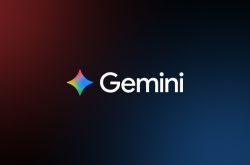Thirteen Development Trends of AI Agents in 2025
![]() 01/07 2025
01/07 2025
![]() 479
479
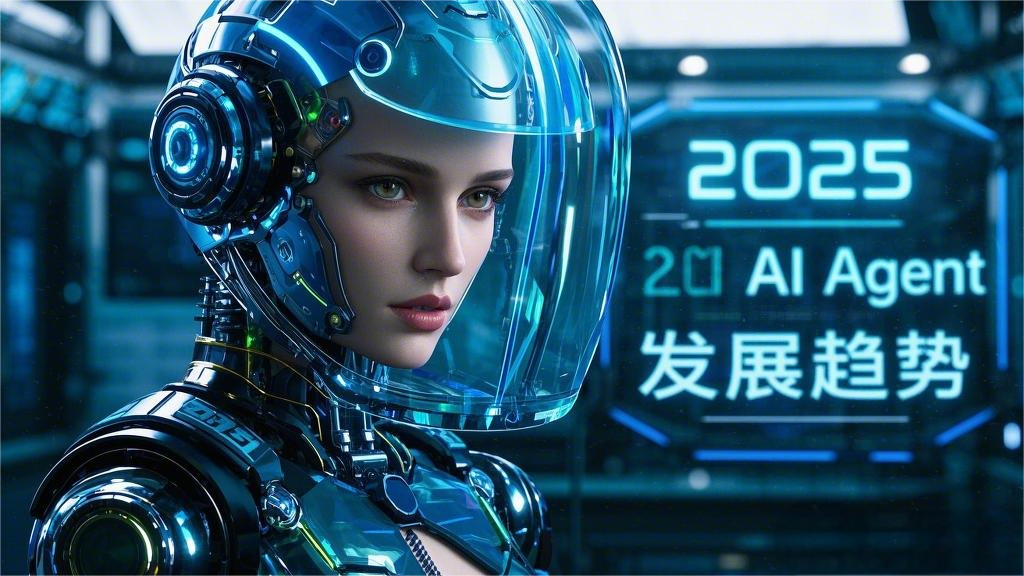
Exploring Intelligent Agents through 13 Perspectives: A Comprehensive Guide to the Development Trends of AI Agents in 2025
The Dawn of the Intelligent Agent Era: Thirteen Development Trends in AI Agents in 2025
Navigating the New Frontier: Thirteen Trends Shaping the AI Agent Market in 2025
Unlocking Business Potential: Thirteen Development Trends and Investment Opportunities in AI Agents for 2025
The Commercialization Milestone: Understanding the Thirteen Trends of Intelligent Agents in 2025
Decoding the Future: Thirteen Development Trends in the Field of AI Agents in 2025
Since AutoGPT ushered in the era of intelligent agents in 2023, these new generation of intelligent interaction paradigms have demonstrated unprecedented vitality. In 2024, the field witnessed explosive growth, encompassing everything from personal assistants to enterprise-level solutions, and from general-purpose agents to domain experts. AI Agents are reshaping the digital landscape.
This growth is evident not only in technological advancements but also in the diverse and expansive practical applications. Breakthroughs in intelligent customer service, financial trading, medical diagnosis, marketing, and human resources highlight the vast potential of AI Agents across various sectors.
Particularly in enterprise digital transformation, AI Agents have demonstrated autonomous decision-making, multi-task coordination, and continuous learning capabilities, revolutionizing traditional business processes.
IDC predicts that by 2026, 50% of China's top 500 data teams will utilize AI Agents for data preparation and analysis. Gartner forecasts that by 2028, at least 15% of daily work decisions will be made autonomously by Agentic AI, and 33% of enterprise software applications will incorporate Agentic AI.
Notably, Gartner's "Top Ten Technology Trends for 2025" report listed "Agentic AI" at the top, underscoring its pivotal role in enterprise digital transformation. This trend is widely recognized by industry experts.
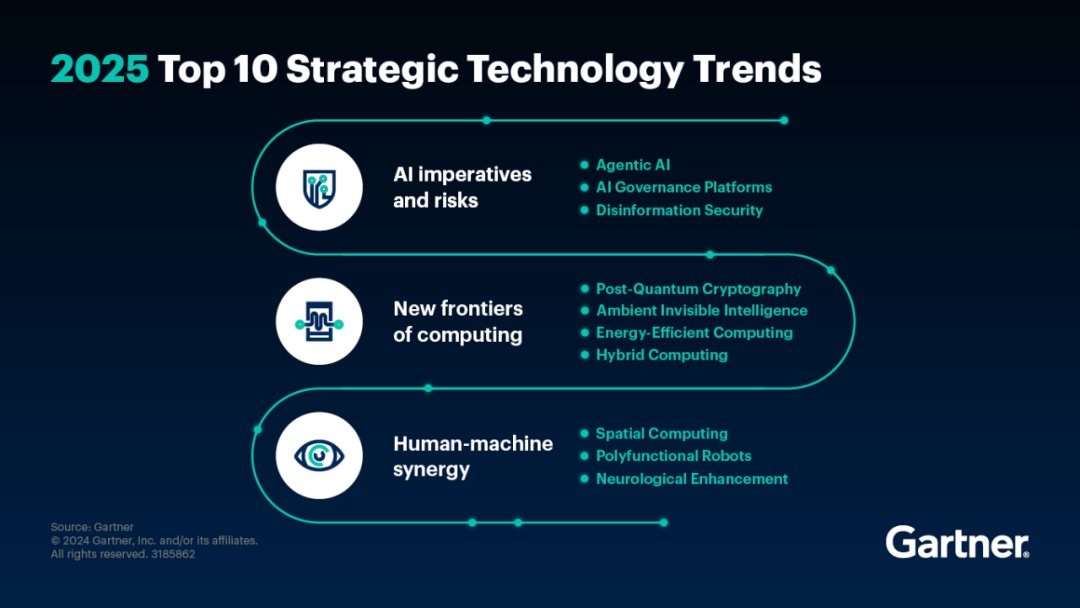
In the investment realm, AI Agents have garnered unprecedented attention. Data reveals over $2 billion invested in Agentic AI startups in the past two years, focusing on enterprises. Simultaneously, tech giants are accelerating their AI Agent strategies through research, acquisitions, and technology licensing.
At the corporate decision-making level, the strategic importance of AI Agents continues to rise. A recent McKinsey study revealed that over 70% of CEOs believe AI Agents will significantly alter business models and competitive landscapes within the next three years. Deloitte's survey data further indicates that by 2025, 25% of enterprises using generative AI will deploy AI Agents, rising to 50% by 2027.
From a technological standpoint, AI Agents achieved numerous breakthroughs in 2024. Enhanced multimodal understanding enables better processing of images, speech, and text. The reinforcement learning-based autonomous decision-making framework allows for more accurate judgments in complex scenarios. Additionally, the maturation of multi-agent coordination frameworks facilitates effective cooperation among different Agents to tackle complex tasks.
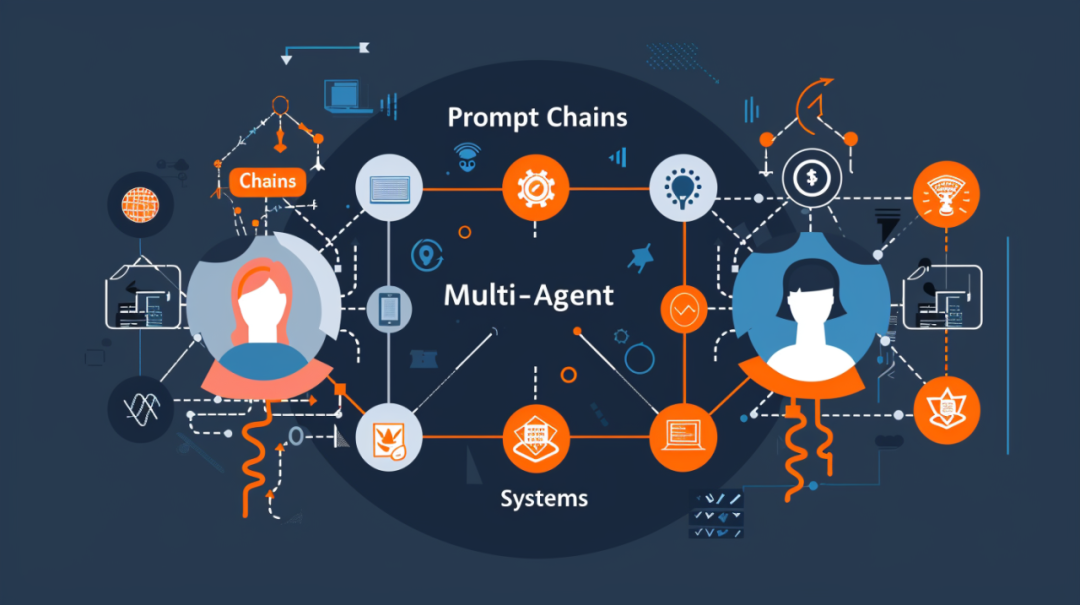
Technological giants are actively deploying AI Agents. Microsoft, Amazon, and others are fully integrating AI Agents into enterprise office scenarios. Advances in multimodal capabilities by OpenAI GPT-4, Google Gemini, Alibaba Qwen2, Tencent Hunyuan, and others offer new avenues for Agent technology development. Simultaneously, innovative tech companies are launching vertical solutions to promote AI Agent applications across different scenarios.
The rapid development of AI Agents in 2024 surpassed expectations. As 2025 marks the first year of AI Agent commercialization, what should we anticipate? This article from the Wang Jiwei Channel delves into 13 key development trends in the AI Agent field for 2025. These trends reflect both technological evolution and industrial transformation, providing valuable insights for enterprise decision-makers and industry professionals.
The 13 trends span technological innovation, application implementation, business models, and industrial ecology, offering a holistic view of AI Agent development opportunities and challenges.
Trend 1: Substantial Increase in AI Agent Adoption Rates
Gartner ranks Agentic AI as the top technology trend for 2025. Agentic AI facilitates the transition from query-response systems to autonomous machine Agents capable of executing enterprise tasks without human guidance.
Global tech companies like Microsoft are actively developing Agent AI. For instance, Microsoft signed a multi-year agreement with the UK government to provide AI tools to public sector organizations, aiming to enhance productivity and efficiency by enabling software Agents to handle complex decision-making tasks.
Gartner believes Agentic AI can fulfill CIOs' aspirations to boost organizational productivity across the board. This motivation drives enterprises and vendors to innovate and establish robust, secure, and trustworthy Agent technologies and practices.
The popularity of Agentic AI will lead to widespread AI Agent adoption. In the coming year, industries will adopt AI Agents for cross-departmental tasks. Various data institutions forecast a promising future for AI Agents.
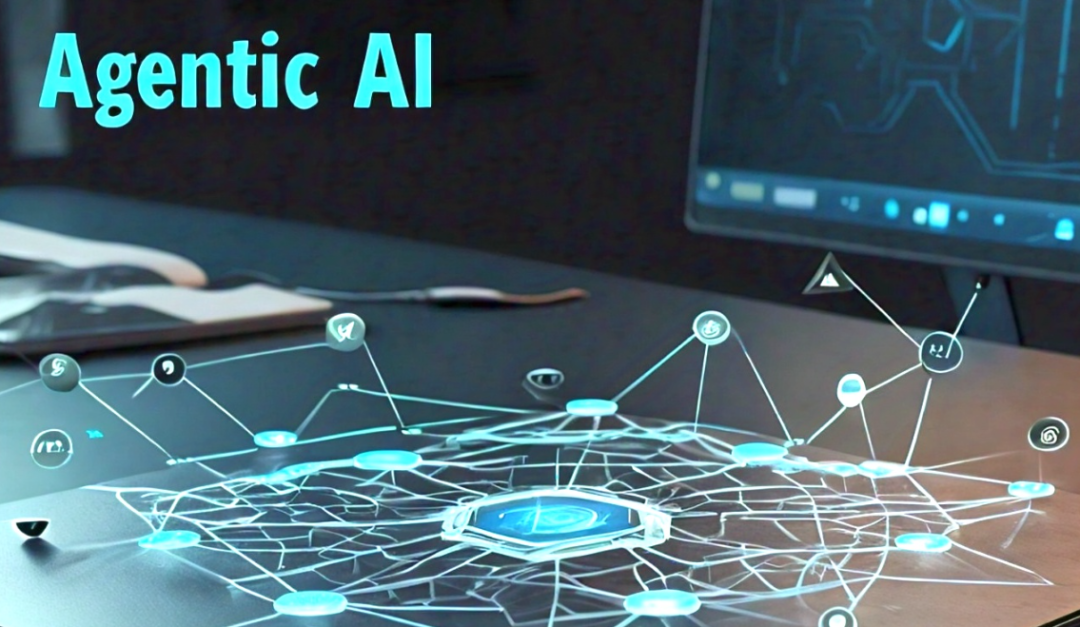
A Capgemini report notes that 82% of organizations plan to integrate AI Agents by 2026 for tasks like email generation, coding, and data analysis. Similarly, Deloitte predicts that by 2025, 25% of GenAI-using enterprises will deploy AI Agents, rising to 50% by 2027.
Gartner forecasts that by 2028, at least 15% of daily work decisions will be made autonomously by Agentic AI, with 33% of enterprise software applications incorporating Agentic AI.
IDC predicts that by 2026, 50% of China's top 500 data teams will use AI Agents for data preparation and analysis, becoming crucial organizers and coordinators.
As 2025 marks the first year of AI Agent commercialization, we'll witness specialized AI Agent products and case studies in finance (auto-trading robots), retail (personalized shopping assistants), and healthcare (virtual health consultants).
Trend 2: Enhanced User Experience with Multimodal AI Agents
Multimodal AI Agents are advanced systems capable of understanding and processing multiple modal inputs, including text, images, and audio. Their robust multimodal understanding integrates visual and linguistic data, improving model generalization and reducing hallucinations in large foundational models. Through environmental interaction, they achieve continuous learning and self-improvement.
The rise of multimodal AI Agents signifies a significant AI leap. These Agents process and integrate various data types, enabling versatile applications across industries.
By mimicking human perception and cognition, multimodal AI Agents offer richer, more intuitive user experiences, advancing AI technology's intellectualization and humanization.
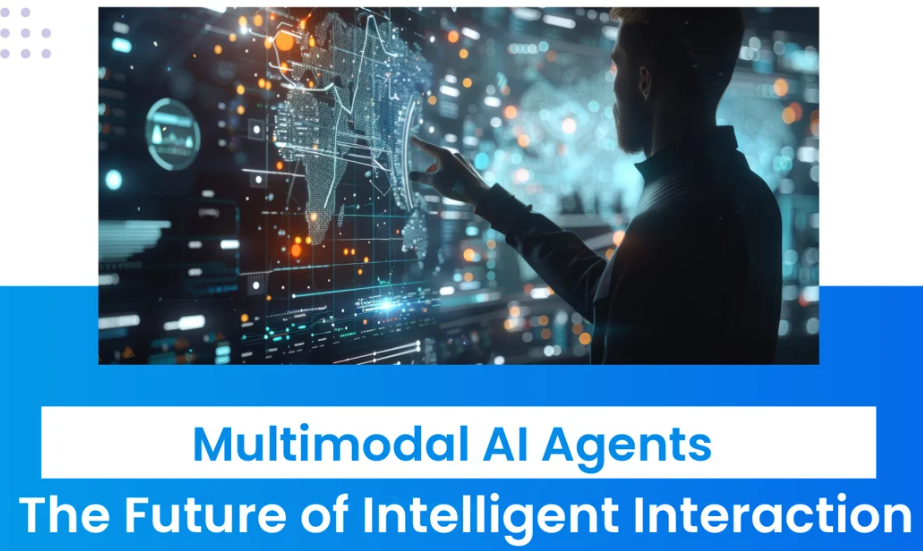
In healthcare, multimodal AI Agents revolutionize diagnosis and patient care by analyzing medical images, patient records, and symptoms for comprehensive, accurate diagnoses. In retail, they enhance customer experiences through visual recognition and natural language processing, enabling intuitive shopping assistants.
In advertising and design, these Agents generate text-image content, understanding the nuances of visual and verbal communication. This is invaluable for creating targeted marketing materials and personalized content at scale.
Multimodal AI's application in gaming, robotics, and healthcare drives research and innovation. Its ability to process and synthesize diverse information mirrors human cognition, making it a valuable tool for complex decision-making.
With AI Agents' growing impact on industries and large models' evolution towards multimodality, multimodal AI Agents will be a significant AI Agent product form in 2025.
Trend 3: Rising Popularity of Multi-Agent Systems
While single AI Agents offer valuable enhancements, their true transformative power lies in collaboration.
Multi-Agent AI systems utilize multiple role-specific Agents to understand requests, plan workflows, coordinate Agents, simplify operations, collaborate with humans, and validate outputs. They often involve standard task Agents (e.g., user interface, data management) working with specialized skill and tool Agents (e.g., data extractors, image interpreters) to achieve user-defined goals.
Each AI Agent's core is a language model providing semantic understanding. Depending on the use case, Agents may use the same or different language models, allowing some to share knowledge while others validate outputs, enhancing process quality and consistency.
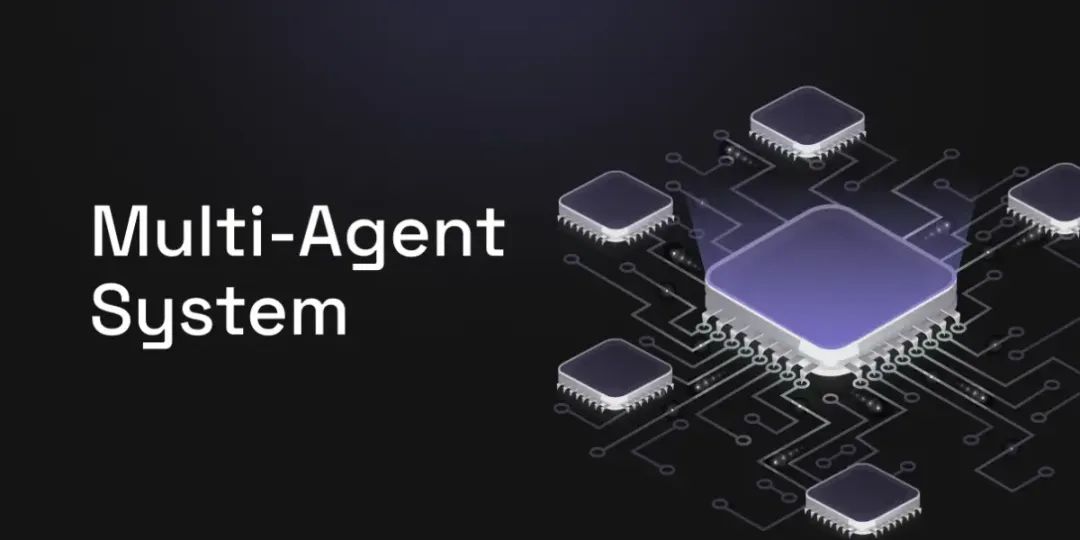
Shared short-term and long-term memory resources further enhance this potential, reducing human prompts during planning, validation, and iteration.
As enterprises demand increasingly complex solutions, multi-agent system development will be crucial. AI Agents will collaborate to solve problems and execute multi-layered decision-making tasks.
These Agents will share information, coordinate actions, and handle complex workflows across departments or services. For example, in logistics, multi-agent systems optimize supply chains, manage inventory, and predict demand fluctuations.
In 2025, more organizations will deploy multi-agent systems to manage and optimize business processes. Platforms like OpenAI Swarm and Microsoft's Magnetic AI will lead this trend, enabling collaborative Agent deployment and management.
Trend 4: Prevalence of AI Agent Clusters
An AI Agent cluster comprises multiple Agents working together to solve complex problems or perform tasks. Each Agent may have different responsibilities or expertise, exceeding single Agent capabilities through collaboration. For example, in gaming, multiple Agents manage strategic planning, resource allocation, and character behavior, defeating human players or tackling challenging levels.
An AI Agent network connects Agents through communication protocols, allowing distributed operation across geographical locations or computing nodes while maintaining collaboration.
A defining feature of AI Agent networks is their decentralization, allowing each Agent to autonomously engage with others, share information and resources, and achieve more efficient task allocation and problem-solving. For example, the fusion of AI Agents with Web3 can usher in a new era of the digital economy, offering highly personalized services to users while safeguarding data privacy and security. AI Agent clusters and networks are crucial for accomplishing complex tasks and enhancing AI system performance, often complementing each other in practical applications. By 2025, AI Agents will further enhance collaboration and teamwork. Silvio Savarese, head of AI research at Salesforce, believes that in the upcoming year, AI Agents will collaborate in groups to tackle daily tasks and business challenges, redefining productivity and problem-solving abilities on an unprecedented scale. AI Agents will seamlessly integrate into our lives, with individuals having personal Agents and organizations deploying specialized Agents. These Agents can be procured through platforms like Agentforce, tailored for specific tasks, and working in unison to achieve shared goals. The future will not only revolve around using AI but also about creating and customizing Agents that collaborate to understand and execute strategic tasks and decisions, whether in personal or business environments.
Trend 5: Rapid Rise of Vertical AI Agents
Vertical AI Agents are software programs tailored to specific industries or domains, leveraging AI technology to automate tasks, boost efficiency, and replace some manual labor. Industry insiders project that the future market size of Vertical Agents will be ten times that of the SaaS market and may replace SaaS in many areas.
Extended Reading: Top Incubator Y Combinator Interprets Agents, Eight Questions About the Future Development of Vertical AI Agents
They serve as virtual assistants tailored for specific tasks, capable of understanding industry-specific language, processes, and data, and providing personalized solutions based on user needs. Vertical AI Agents can perform diverse tasks, including data collection and analysis, report generation, user interaction, workflow execution, and more.
From a market perspective, current technology cannot adequately support super agents across businesses, scenarios, departments, or even industries. However, it can segment business processes, scenarios, or specific areas more vertically, giving rise to Vertical AI Agents tailored to market demand.
The primary advantage of Vertical AI Agents lies in their high degree of specialization and customization, often outperforming general agents in specific fields. They are efficient, responsive, and have undergone extensive training and optimization in specific areas, resulting in high stability and reliability.
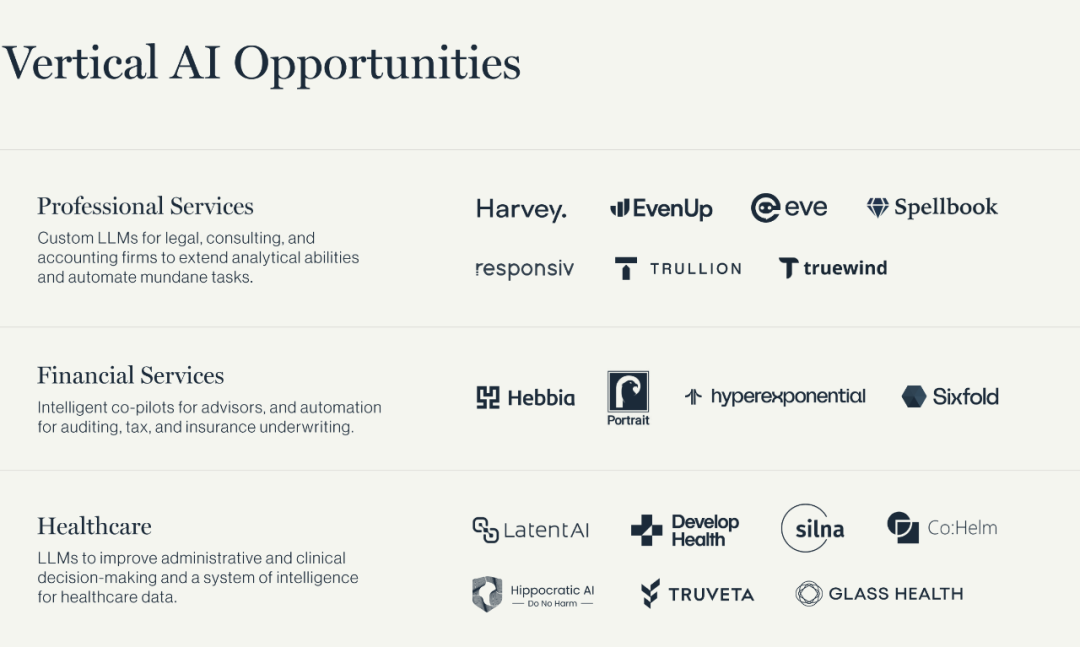
Conversely, Vertical AI Agents' disadvantage is their limited adaptability, making it challenging to handle tasks outside their expertise. Additionally, their development costs are high due to the need for deep customization and optimization for specific areas.
Vertical AI Agents have a wide range of applications, including but not limited to healthcare, finance, customer support, market research, and analysis. For instance, in healthcare, IBM Watson for Oncology is a Vertical Agent focused on cancer treatment, aiding doctors in developing personalized treatment plans by analyzing vast medical data and literature. In finance, automated trading systems are Vertical Agents that execute buy and sell operations based on market data and historical transaction records to maximize profits.
Starting in 2025, based on more mature technology and increased user demand, Vertical Agents will rapidly capture the market.
Trend 6: Agentic AI Will Become a Top-Level Corporate Strategy
Agentic AI refers to artificial intelligence systems capable of perceiving their environment, understanding context, and performing complex tasks based on this understanding. These systems typically operate autonomously or semi-autonomously in the physical or virtual world, processing multiple input modes such as vision, language, and sound to make decisions and respond accordingly.
Extended Reading: Agentic Workflow Accelerates the Arrival of Agentic AI, Making AI Agents a Critical Implementation Method
Gen AI chatbots and copilots can intuitively interact with humans, synthesize complex information, and generate content. However, they lack the agency and autonomy of Agentic AI. AI Agents can act independently, break down tasks into discrete steps, and complete them with minimal human supervision or intervention. AI Agents do more than just interact; they can also more effectively represent users in reasoning and operations.
Agentic AI possesses "agency," the ability to take action and choose actions to take. These goals are set by humans, but the Agent decides how to achieve them. The focus is not on the intelligence of AI Agents but on the evolution of AI from GenAI to Agentic AI. As its popularity grows, "AI Agent" technology can be integrated into more business processes, becoming a mainstream technology in corporate AI strategies, thereby enhancing the market penetration of AI Agents in various fields.
At the current stage of AI technology development, we are not using large language models or GenAI to narrate AI macroscopically but rather using Agentic AI to describe the current characteristics of AI. It is evident that Agentic AI simply and intuitively reflects the current status and trends of AI applications. Next, the proactive and perceivable automation technology represented by Agentic AI will transform the stumbling status of expert systems and RPA, becoming a strategic development vision for major organizations and entering the technology procurement list.
In the past two years, investors have poured over $2 billion into Agentic AI startups, focusing on companies targeting the enterprise market. Simultaneously, many technology companies, cloud providers, and others are developing their own Agentic AI products. They are also making strategic acquisitions, increasingly licensing Agent AI technology from startups and hiring their employees rather than directly acquiring these companies.
Agentic AI differs from current chatbots and copilots in that it can significantly improve the productivity of knowledge workers and automate multi-step processes across business functions. Deloitte predicts that by 2025, 25% of companies using first-generation AI will launch Agentic AI pilots or proof-of-concepts, growing to 50% by 2027.
Trend 7: Increased Application of GUI Agent Products
The Graphical User Interface (GUI) has long been the core of human-computer interaction, enabling users to manipulate digital systems intuitively and visually. However, traditional GUI interaction automation relies heavily on scripting or rule-driven methods, which suffice in fixed processes but lack flexibility and adaptability, making it challenging to meet complex and dynamic real-world needs.
GUI Agents are defined as agents operating in a GUI environment that use LLM as the core reasoning engine to generate, plan, and execute operations in a flexible and adaptive manner.
LLM-driven GUI Agents represent a new paradigm for GUI automation, integrating natural language understanding, visual recognition, and decision-making, significantly enhancing the intuitiveness and efficiency of task automation. Unlike traditional API-driven Agents, GUI Agents do not require access to internal APIs, leveraging the versatility of graphical interfaces for cross-platform operations, featuring non-intrusive characteristics that expand their application range. This transformation simplifies user interaction with complex systems, reduces cognitive load, and enables ease of use even for non-technical users.
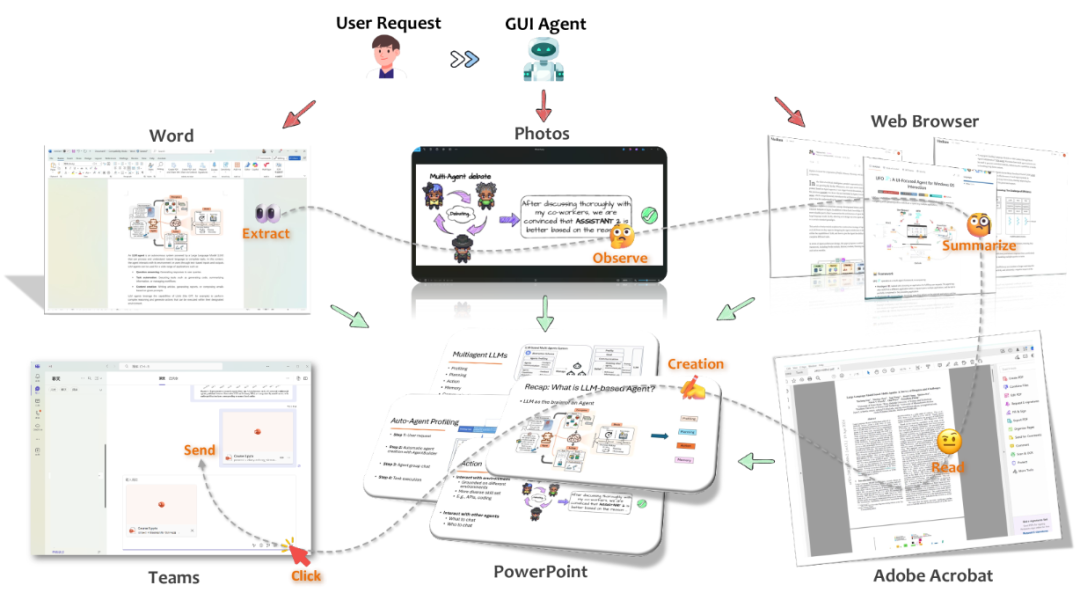
For example, Agents like SeeAct, AppAgent, and UFO demonstrate immense potential in web navigation, mobile app interaction, and operating systems, akin to "virtual assistants" in science fiction films, capable of understanding user goals and executing cross-application tasks. In practical applications, tools like Microsoft Power Automate and Copilot leverage LLM to support low-code/no-code automation, design cross-application workflows, bridge the gap between natural language instructions and application operations, and provide new accessibility features, enabling visually impaired users to operate GUIs more efficiently.
LLM-driven GUI Agents show great potential in web navigation, mobile app interaction, and desktop automation, revolutionizing the way users interact with software. This emerging field is rapidly evolving, with significant progress in both academia and industry.
Current GUI Agent technology frameworks include Tencent's AppAgent, AISpeech's AutoGLM, Microsoft's OmniParser, Athropic's Compute Use, CogAgent, among others.
It should be noted that besides GUI Agents, UI Agents are also evolving rapidly. UI Agents are a broader concept, referring to agents capable of interacting with any User Interface (UI), including Graphical User Interfaces (GUI), Command Line Interfaces (CLI), touchscreen interfaces, etc.
In 2025, with the deeper application of more multimodal large language models and the launch of related technology frameworks, GUI Agent and UI Agent products will see increased application.
Trend 8: RAG-type Agents Gain Favor Among Enterprises
Retrieval-Augmented Generation (RAG) technology is revolutionizing enterprise-level AI applications by seamlessly integrating the generative capabilities of large language models with external knowledge retrieval mechanisms, creating AI Agents that are precise, reliable, and contextually aware.
From a technical perspective, RAG's core mechanism involves introducing a retrieval and verification step from specialized knowledge bases before generating a response. This innovation significantly reduces the likelihood of AI systems producing "hallucinations" (generating plausible but erroneous information). For enterprises, this mechanism is crucial, especially in fields requiring high information accuracy such as law, healthcare, and financial services.
The primary drivers for enterprises to adopt RAG technology are its economic benefits and resource integration advantages. Enterprises can effectively improve AI system accuracy without continuously retraining large models and can fully utilize existing knowledge bases and data resources to ensure AI outputs are highly consistent with corporate-specific information and policies.
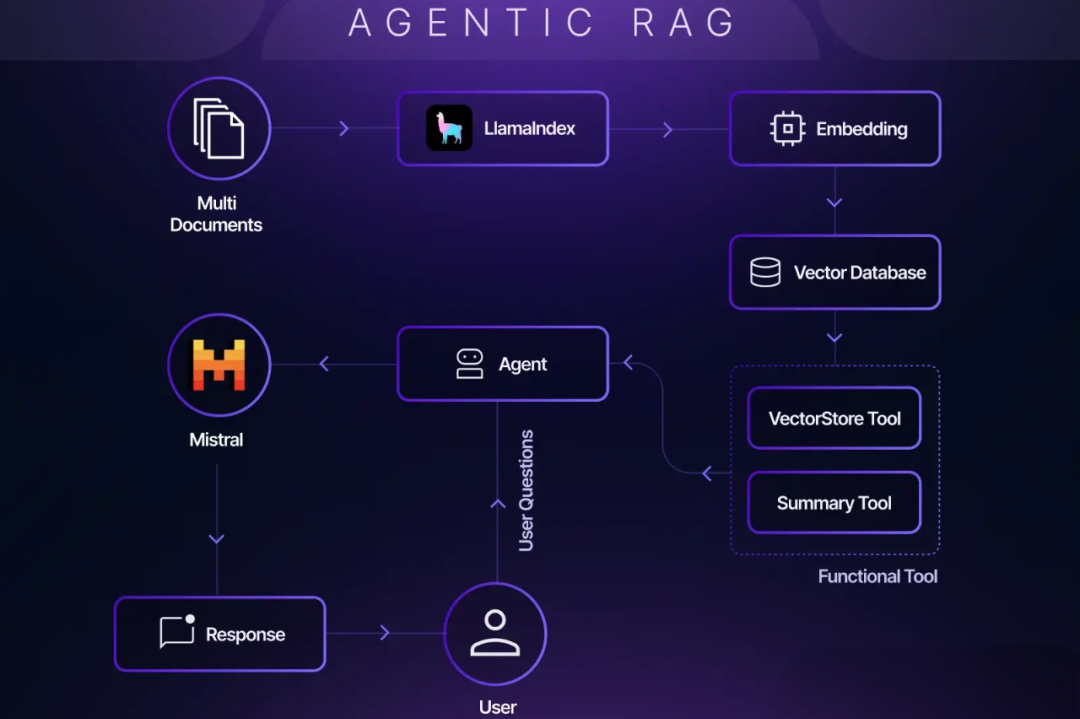
RAG-based AI Agents demonstrate immense potential in enterprise applications. In intelligent customer service, they provide precise responses based on corporate knowledge bases, enabling contextual understanding in multi-turn conversations. In knowledge management, they construct intelligent document retrieval systems, optimizing internal knowledge flow within enterprises. In decision support, they offer decision-making suggestions based on historical data and provide real-time market analysis. In business processes, they enable intelligent document processing and data analysis, significantly enhancing work efficiency.
From the perspective of machine learning technology trends, the application of RAG technology will become more in-depth and widespread. Its unique advantage lies in combining the flexibility of generative models with the reliability of specialized knowledge bases, providing enterprises with a feasible path to effectively implement AI solutions while ensuring accuracy and relevance.
This innovative technology framework not only optimizes the performance of enterprise AI applications but also provides new technical support for digital transformation. As the technology continues to advance, RAG-based AI Agents will play an increasingly crucial role in enterprise intelligence construction, driving comprehensive improvements in operational efficiency and service quality.
Under this scenario, RAG-type AI Agents will see deeper application in enterprises by 2025.
Trend 9: Agentic Workflow Drives the Rise of the Agent Orchestration Layer
Agentic Workflow is an AI-driven workflow that automates complex tasks through adaptive loops and multi-step task decomposition. It utilizes AI Agents to collect feedback, evaluate performance, and dynamically adjust behavior to optimize workflows.
While simplifying AI application development, Agentic Workflow also promotes the rise of the Agent Orchestration Layer, enabling developers to more easily build complex AI solutions.
Extended Reading:
New Paradigm of Agentic Workflow: Integrating Large Language Models, Business Processes, and Agents [With Ten Related Papers]
From LLM to AI Agent, From Workflow to Agentic Workflow: A Comprehensive Understanding of Agentic Workflow Through 25 Papers
The Agent Orchestration Layer is reshaping the development landscape of AI applications by simplifying workflows, enhancing efficiency, and promoting collaboration, making it easier to build complex AI solutions. The core of this trend lies in the rise of Agentic Workflows, empowering developers to easily build and manage multiple autonomous Agents performing diverse tasks, such as providing insurance quotes, handling negotiations, executing contracts, and submitting claims.
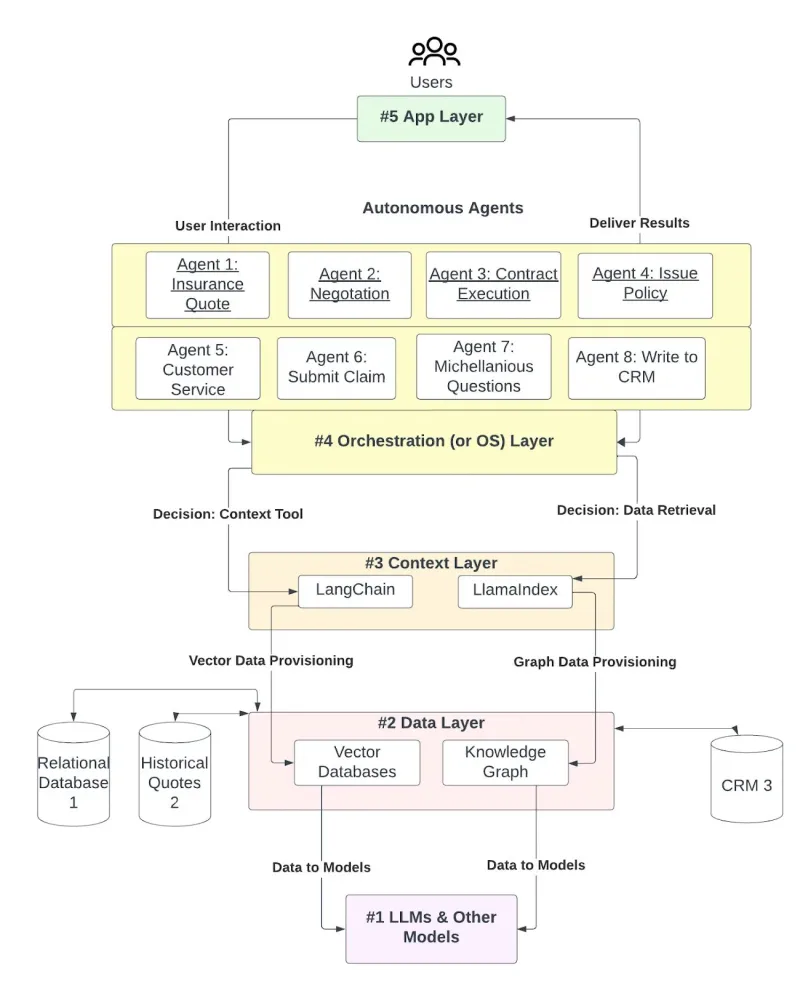
The orchestration layer's operation mechanism involves several key aspects:
Firstly, it coordinates autonomous Agents, managing multiple Agents performing different tasks. These Agents interact with each other and with the orchestration layer to provide comprehensive task-driven solutions.
Secondly, the orchestration layer utilizes a context layer to dynamically extract relevant data, ensuring that Agents are contextually aware, thereby improving decision-making accuracy and efficiency.
Furthermore, it equips Agents with the requisite data layer information to perform tasks, effectively bridging the gap between extensive data sources and AI models. Ultimately, it connects autonomous Agents to the application layer, facilitating user interaction with the system and result reception, thereby enhancing the user experience.
The orchestration layer's strength lies in its capability to streamline intricate workflows by orchestrating multiple Agents. It abstracts complexity, enabling developers to concentrate on creating high-level functionalities. It seamlessly integrates new Agents and tools, facilitating the scalable deployment of AI solutions. Automated data retrieval, context management, and decision-making processes minimize manual intervention and expedite task completion.
The orchestration layer bolsters collaboration among Agents, enabling dynamic teamwork, context, and result sharing, fostering comprehensive solutions. Its flexibility allows for the incorporation of various tools like LLMs, APIs, and databases, adapting the system to diverse industries and use cases. These advantages collectively propel the application and development of AI technology across various fields.
By 2025, the Agent Orchestration Layer, driven by Agentic Workflow, will become a standard feature of Agent platforms.
Trend 10: Accelerated Deployment of Edge AI Agents
Edge AI Agents, running directly on user devices, process data locally, offering instant responses and safeguarding user privacy. This technology is transforming our interaction with smart devices and their information processing capabilities.
Edge AI Agents have diverse applications, spanning smartphones, PCs, automobiles, XR devices, and IoT devices, encompassing nearly all consumer electronics categories. These Agents deliver personalized services and responses based on user behavior and preferences, significantly elevating device intelligence.
Extended Reading: AI Agents Swarming to Mobile Devices, Enabling New Cross-Platform and Cross-Application Business Connections
As hardware manufacturers integrate AI technology, the global smartphone market has entered a plateau phase. AI agents are poised to ignite an innovation-driven cycle, enhancing smartphone intelligence and revolutionizing existing human-computer interaction paradigms. Moreover, the long-term evolution of edge AI necessitates cloud collaboration, generating substantial demand for cloud inference computing power and fueling the advancement of cloud and edge computing.
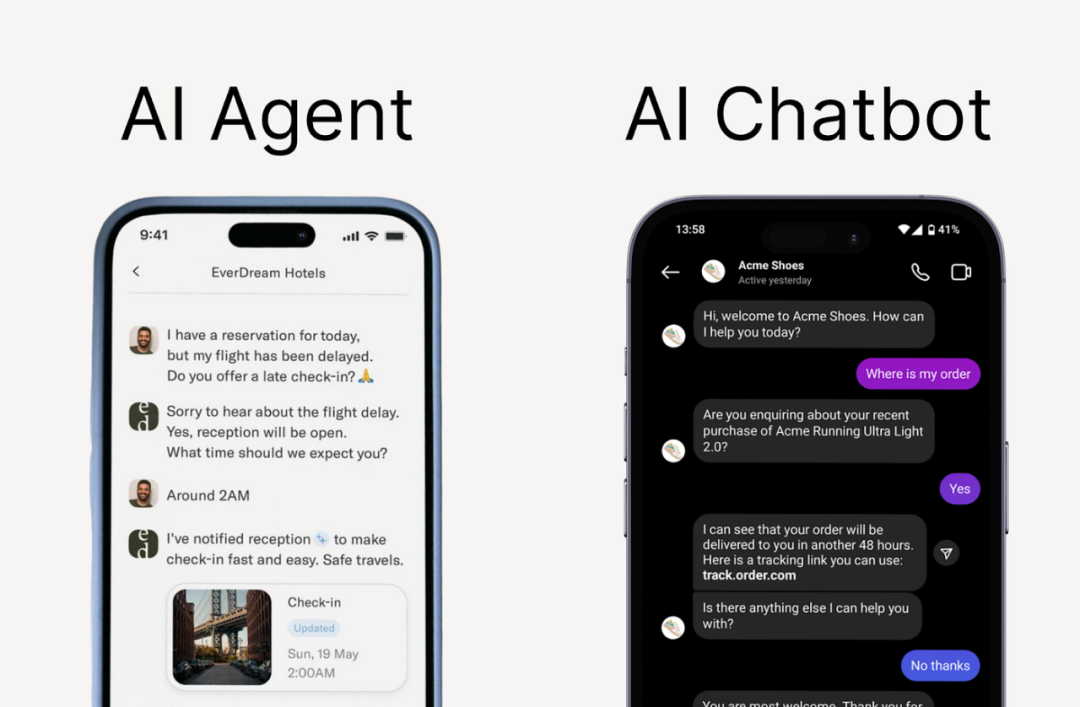
The accelerated deployment of edge AI agents signifies a shift in AI technology from the cloud to edge devices, unlocking boundless potential for AI innovation and development. Across a wide array of consumer electronics, edge AI agents offer users novel AI experiences, driving the upgrading and transformation of related industrial chains.
As technology matures and applications deepen, edge AI agents are expected to become a standard configuration for smart devices in the coming years, leading a new trend in intelligent interaction.
In 2025, AI agents will be more deeply integrated with the Internet of Things (IoT). This integration will facilitate seamless device communication, enhancing automation, data analysis, and real-time decision-making. From smart homes and offices to smart cities, AI agents will soon control devices, manage workflows, and optimize systems without human intervention.
The forthcoming year will also witness AI agents being integrated into personal devices such as mobile phones, PCs, and smartwatches. Imagine having a virtual assistant on your smartphone or laptop that can autonomously execute tasks for you at any time.
Edge AI agents are rapidly landing in various fields.
Trend 11: Web Agents Will Become a Game-Changing AI Application
With the rapid evolution of AI technology, Web Agents, as a new generation of intelligent interaction, are attracting widespread industry attention. This technology automates web tasks, including subscription management, bill payments, medical appointments, online shopping, restaurant reservations, and other daily routines, enabling users to complete operations through voice or text commands without manual input.
The concept of Web Agents has been around for quite some time in technological development. However, in practical applications, no mature, ubiquitous Web Agent product has emerged in the market yet. Radical Ventures venture capitalist Rob Toews believes this is changing: Thanks to continuous breakthroughs in language models and computer vision technology, especially significant progress in 'System 2 thinking' reasoning abilities, the practical application of Web Agents is accelerating significantly.
'System 2 thinking' stems from the dual-system theory proposed by Nobel laureate in economics Daniel Kahneman. Unlike the intuitive and swift 'System 1 thinking,' 'System 2 thinking' represents a deeper, more deliberative cognitive process characterized by slow, rational, and analytical thinking. In AI, this ability manifests as the system's capacity for multi-step reasoning, complex planning, and logical analysis, essential core competencies for Web Agents to execute intricate tasks.
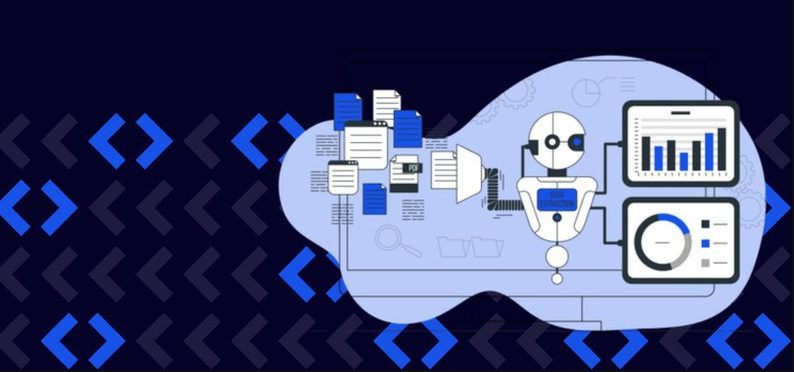
Notably, the setback faced by Adept, a startup specializing in AI Agent development, underscores the importance of technological maturity and market timing. For startups, precisely timing the optimal intersection of technological development cycles and market demands is crucial.
It is widely anticipated that 2025 will mark a significant milestone in the development of Web Agent technology. Although the technology holds substantial potential in enterprise applications, market trends suggest that the consumer market is likely to be the first domain where Web Agents achieve a breakthrough.
Currently, among consumer-grade AI applications, few products other than ChatGPT have achieved widespread adoption. Web Agents are expected to alter this status quo, becoming another transformative AI application following ChatGPT.
Trend 12: AI Agents Reshape Work Styles
AI Agents are gradually transforming our work culture, and this trend is anticipated to accelerate in 2025.
Microsoft research reveals that nearly 70% of Fortune 500 company employees have already started utilizing AI tools to handle mundane tasks such as email filtering and meeting minutes taking. In the future, AI Agents will be capable of managing more complex tasks and even replacing humans in certain roles.
Extended Reading: [Long Article, Recommended for Saving] Comprehensive Analysis of AI Agent Enterprise Application Scenarios: 30 Case Studies of Agent Implementation
Charles Lamanna, Vice President of Microsoft Business and Industry Copilot, stated: "Consider Agents as applications in the AI era. Just as we use diverse apps for various tasks, Agents will commence transforming every business process, revolutionizing the way we work and manage organizations."
With advancements in memory, reasoning, and multimodal capabilities, Agents will undertake more complex tasks with novel skills and interaction forms. Organizations can leverage this to rethink processes like report generation and human resources tasks, for example, by assisting with issues like new laptop replacements or answering benefit questions, allowing employees to concentrate on higher-value work. Enterprises can also deploy multiple Agents to alert supply chain managers about inventory disruptions, recommend new suppliers, and execute sales orders to address daily challenges and sustain sales.
AI Agents will transcend mere assistant roles; they can autonomously or collaboratively complete workflows based on user needs, ranging from creating reports and handling customer demands to coordinating supply chain management, comprehensively enhancing work efficiency and enabling humans to focus more on creative and strategic tasks.
Currently, Microsoft has established the world's largest AI agent ecosystem. Official data indicates that over 100,000 companies have created AI agents using Copilot Studio. For instance, McKinsey shortened its project intake process from 20 days to just 2 days by automating processes and assigning agents, while Pets at Home deployed fraud prevention agents in less than two weeks, saving millions of dollars annually...
It is foreseeable that in 2025, as more technology companies serve a broader range of enterprise users, AI Agents will reshape the working styles of even more users.
Trend 13: AI Agents Further Transform Everyday Life
AI will not only impact our work but also deeply integrate into our daily lives. By 2025, AI tools will become an intrinsic part of personal life. Numerous AI tools assist users in managing daily tasks, such as information handling, important event reminders, and personal question answering, simplifying daily chores.
In fact, many AI tools have now evolved into AI Agents or achieved integration with Agents. AI tools not only enhance life efficiency but also strengthen user interaction. For instance, they can provide summaries based on news the user reads or understand web content through visual capabilities and offer immediate feedback.
In home life, AI assistants can recommend suitable furniture, assist in home environment arrangement, and even offer feng shui advice. As technology advances, future AI companions will be smarter, more emotionally intelligent, and provide more personalized and attentive services, making life more convenient and enriching.
Take Microsoft Copilot as an example. As an AI assistant, it offers round-the-clock support, simplifying and prioritizing tasks like managing the vast amount of daily information received, freeing up more time for users while safeguarding privacy, data, and security. Moving forward, more companies' intelligent assistant products will become smarter and more user-friendly by adopting the Agent model, enabling them to proactively assist users in handling more issues.
Today, all software applications leveraging AI technology are transitioning towards AI Agents, implying that starting in 2025, the smartphones, PCs, watches, and other smart hardware we use will evolve into Agents, and more software applications we utilize will also upgrade to Agents. In the future, all software and hardware will develop towards becoming Agents, profoundly transforming our lives.
Wang Jiwei Channel's new book, "Understanding AI Agents: Technology, Application, and Business," has been published. It offers an accessible guide to mastering AI Agent technology principles, industry applications, business value, and entrepreneurial opportunities. Welcome everyone to pay attention.
[Wang Jiwei Channel, focusing on AIGC and IoT, specializing in digital transformation, business process automation, and AI Agents, welcomes your attention and communication.]


